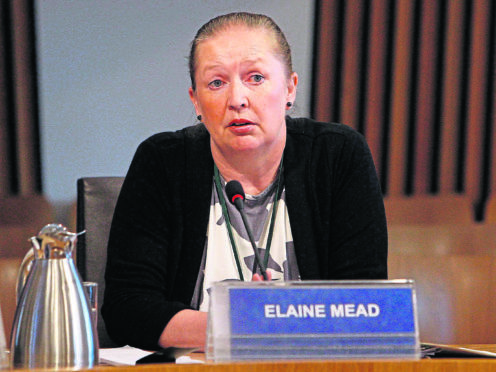NHS Highland chief executive Professor Elaine Mead has claimed it was “good use” of taxpayers’ money to spend almost £1 million on two locum doctors in the area.
Professor Mead admitted the two doctors salaries of more than £400,000 each were “stark” but argued that employing the medics was essential to provide 24-hour cover for emergencies in rural areas.
The outgoing health chief defended the amount of money spent on the two doctors when she faced questions from MSPs on Holyrood’s Public Audit committee.
>> Keep up to date with the latest news with The P&J newsletter
Yesterday, MSPs suggested that locum pay should be capped as they discussed the salaries of £487,495 and £412,625 paid to the two consultants with specialist skills in general surgery and general medicine in 2017/18. The consultants work at Caithness General Hospital in Wick and the Belford Hospital in Fort William.
NHS Highland is facing severe financial difficulties and in September it was projected that it faces an overspend of £22m.
Committee convener Jenny Marra of Labour asked Professor Mead if spending more than £900,000 on the two locums was effective use of taxpayers’ money.
“It is stark,” admitted Professor Mead, who retires at the end of the year. “That is why we have wanted to put this information into the public domain in the way that we have, because this is a good of taxpayers’ money, I would say, because we need to provide a sustainable service.
“This is a rural general hospital where we need to have 24/7 response to emergency care. They need to be expert in that care and they need to be able to address anything that comes into a rural general hospital. Not having an appropriate senior level response is simply not an option.”
Professor Mead said the high wages were also down to the fact that the two locums had been employed on a regular basis. A benefit had been that they had been able to provide continuity of care.
She added that the health board was trying to attract permanent consultants, but there were not that many doctors with the training to act as specialist generalists in remote hospitals.
Evidence submitted to the committee by NHS Highland, showed that locum and agency spend had increased from £425,000 in 2012/13 to £1.7m in 2017/18.
Ms Marra and her Labour colleague Anas Sarwar suggested locum pay should be capped. In response the Chief Medical Officer Dr Catherine Calderwood said: “This is a market place so if there’s a job that said we not going to pay you `x’ amount those people would go and take a job elsewhere. So they would leave that service if they could have money or a longer contract somewhere else.”
Professor Mead’s appearance at Holyrood came as the NHS confirmed that NHS Highland’s financial position means there are “significant risks” to delivery, quality, financial performance or safety and external support is required.
NHS Highland, along with NHS Border, is classified as stage four of the NHS Board Performance Escalation Framework. Only NHS Tayside was higher, reaching stage five.










